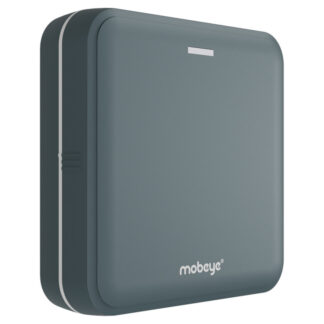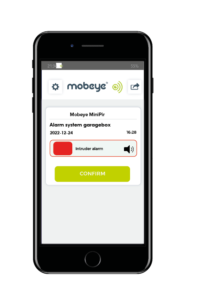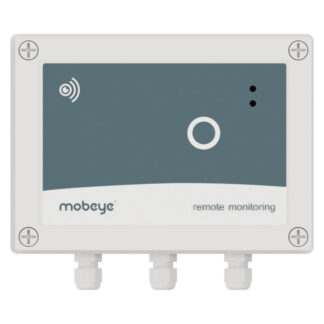Telemetry Monitoring

Showing all 3 results
-

Mobeye CM-Guard TwinLog CML4055 – Voltage Monitor & Alarm
€ 289,19 (€ 239,00 excl. VAT) Add to Basket
View product -

Mobeye SISTM CML4015-HP
€ 482,79 (€ 399,00 excl. VAT) Add to Basket
View product -

Mobeye SISTM CML4015-LP – Battery Powered
€ 603,79 (€ 499,00 excl. VAT) Add to Basket
View product
Telemetry Monitoring
Telemetry is a cutting-edge technology that revolves around the collection and transmission of data from distant or hard-to-reach sources to a central hub for continuous monitoring and in-depth analysis. Its significance spans across multiple sectors, including aerospace, healthcare, and the automotive industry.
Telemetry systems rely on a combination of sensors and instruments to capture critical information such as temperature, pressure, and location. This data is then transmitted in real-time or at predetermined intervals, using both wireless and wired connections. This empowers organisations to make data-driven decisions, track performance, and efficiently diagnose and address operational challenges, ultimately elevating safety and operational efficiency.
Telemetry monitoring with Mobeye
In the era of increasing industrial automation, telemetry systems have become an indispensable asset. Mobeye offers standard industrial sensors and transmission modules meticulously engineered to excel in demanding infrastructure environments.
Mobeye’s telemetry monitoring devices excel in accurately capturing voltage values, monitoring alarm thresholds, detecting anomalies, and providing a comprehensive overview of value trends. When seeking the most suitable product for your specific application, explore the following options:
- For precise analogue assessments of battery voltage, the CM-Guard TwinLog CML4055 stands out as the ideal choice.
- If you’re dealing with sensors that generate output voltage ranging from 0 to 10 volts or 4-20mA, the Mobeye SISTM CML4015-HP and SISTM CML4015-LP emerge as the optimal solution. Feel free to reach out to us for more detailed information on how Mobeye can effectively address your requirements.
Frequent Asked Questions
Q1: What is telemetry monitoring?
A1: Telemetry monitoring, often known as “telemetry,” is a system that remotely collects and transmits data from various devices, sensors, or instruments to a central location for analysis and action. It’s used in fields like healthcare, aviation, and industry.
Q2: Where is telemetry monitoring commonly used?
A2: Telemetry monitoring is employed in diverse fields, including healthcare (patient vital signs), aviation (flight data), automotive (vehicle performance), industry (machinery status), and environmental monitoring (weather conditions).
Q3: What are the benefits of telemetry monitoring?
A3: The key advantages of telemetry monitoring include real-time data access, remote monitoring and control, early issue detection, and enhanced safety and efficiency in various industries.
Q4: How does telemetry monitoring work?
A4: Telemetry systems use wireless or wired networks to transmit data from sensors or devices to a central hub. The data is then processed and analysed for monitoring, diagnostics, or decision-making.
Q5: Why is telemetry monitoring important in healthcare?
A5: In healthcare, telemetry monitoring tracks vital signs (e.g., heart rate, blood pressure) remotely, enabling continuous monitoring of patients. This helps healthcare professionals respond promptly to any critical changes in a patient’s condition.
Q6: How does telemetry benefit the automotive industry?
A6: Telemetry in vehicles transmits data on engine performance, fuel consumption, and safety features to manufacturers or service centers. This aids in diagnosing issues, optimising performance, and enhancing safety.
Q7: What role does telemetry play in environmental monitoring?
A7: Telemetry is used in environmental monitoring to collect data from remote sensors, monitoring weather conditions, water quality, pollution levels, and more, aiding in environmental management.
Q8: Can telemetry help prevent equipment failures in industries?
A8: Yes, telemetry can help prevent equipment failures by monitoring machinery performance and alerting operators to any anomalies. This allows for timely maintenance and reduces downtime.
Q9: How does telemetry contribute to aviation safety?
A9: In aviation, telemetry monitors flight data, including altitude, speed, and engine performance, ensuring safe and efficient operations. It provides critical information to pilots and ground control.
Q10: What are the advantages of real-time data access through telemetry?
A10: Real-time data access via telemetry allows for immediate response to changing conditions, proactive maintenance, data-driven decision-making, and improved operational efficiency in various industries.
Showing all 3 results

 Finding the ideal product to meet your project needs can be challenging. We have organised our products by application to simplify your decision-making process. To access a list of related products, please click on the relevant application field.
Finding the ideal product to meet your project needs can be challenging. We have organised our products by application to simplify your decision-making process. To access a list of related products, please click on the relevant application field.
